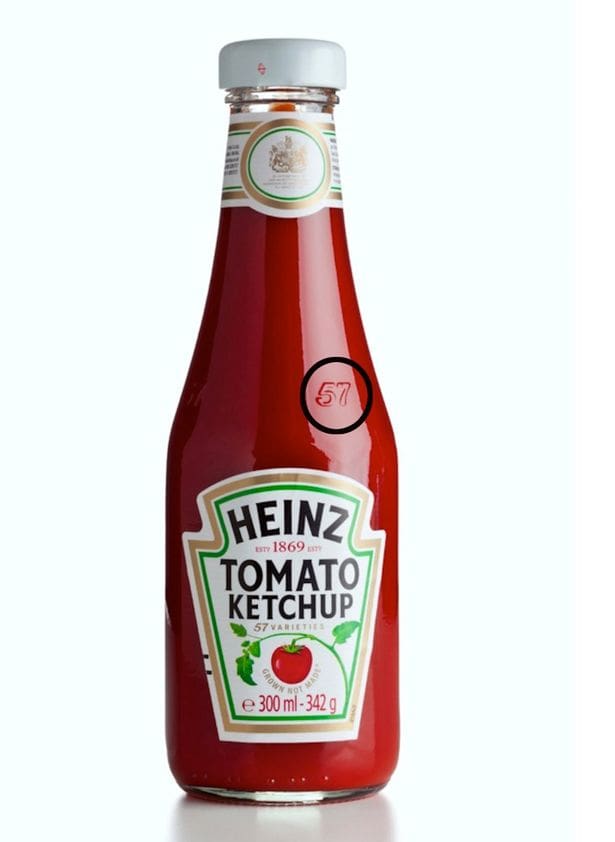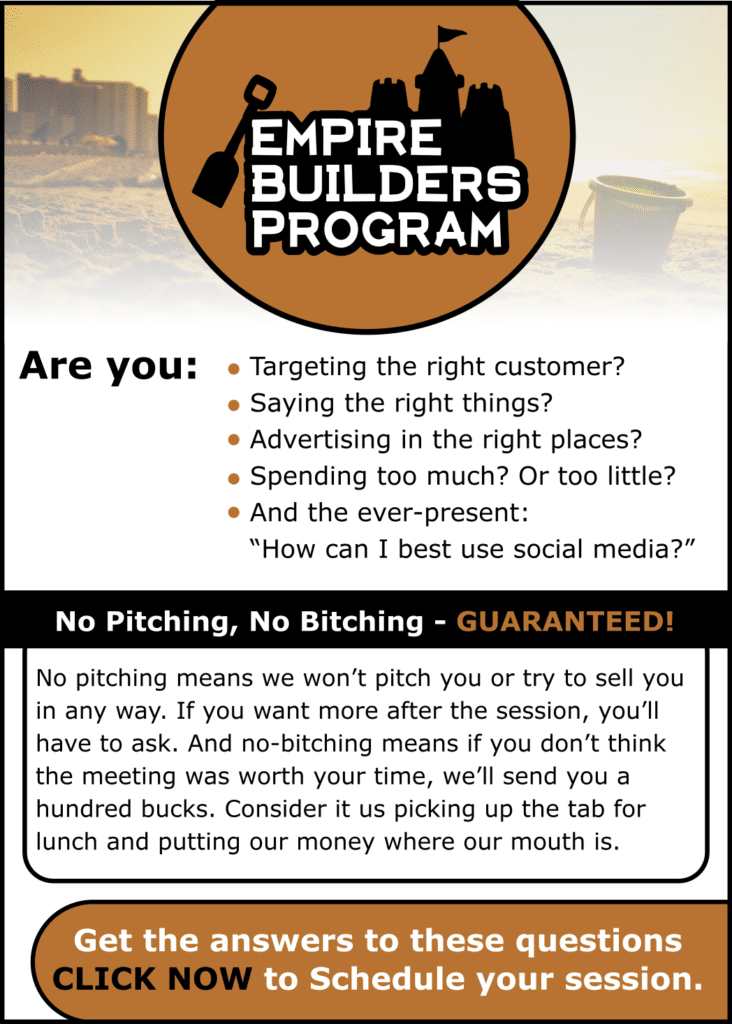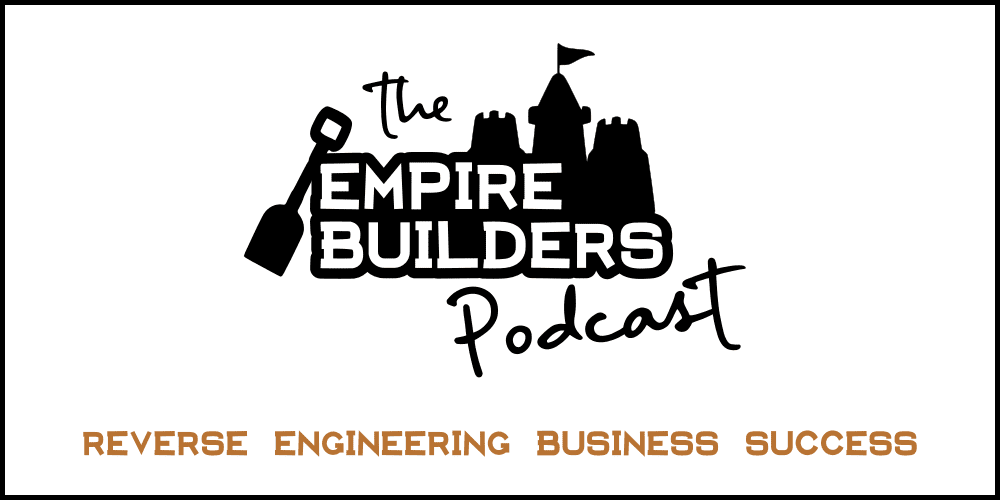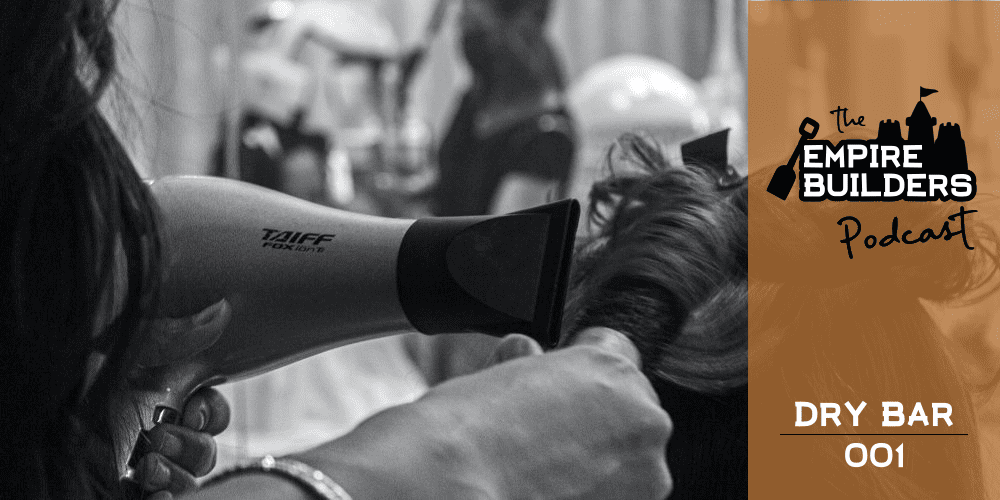From debtors prison to the fastest-growing company in America. HJ Heinz is the story of fish guts, watery ooze, and new manufacturing breakthroughs.
Dave Young:
Welcome to the Empire Builders Podcast, teaching business owners the not-so-secret techniques that took famous businesses from mom and pop to major brands. Stephen Semple is a marketing consultant, story collector and storyteller. I’m Stephen’s sidekick and business partner, Dave Young. Before we get into today’s episode, a word from our sponsor, which is, well, it’s us. But we’re highlighting ads we’ve written and produced for our clients, so here’s one of those.
[Jim’s Razorback Pizza Ad]
Dave Young:
Welcome back to the Empire Builders Podcast. So Stephen, this is episode 57. Unbelievable.
57, isn’t that amazing? Just amazing how time flies. And when I got thinking about it, let me ask you a question. When you think about products, Dave, what product comes to mind when you say the number 57?

Dave Young:
Oh, that would be Heinz.
Stephen Semple:
That would be Heinz. So today we’re going to talk about Heinz. But isn’t that incredible? I did not prep you on this. And yet, you say to people, “The number 57,” people immediately go, “Heinz ketchup!” So now there’s a whole ton of things that we could talk about when it comes to Heinz. I mean, we could do probably God, I don’t know how many podcasts we’d do, but what we’re going to talk about today is ketchup, because that’s really the thing that got things going for Heinz. So Heinz was founded by Henry J. Heinz in January of 1869. And what Heinz did at that time is they did a variety of bottled and pickled products. But things weren’t going so great, because in 1875, Henry Heinz went off to debtor prison.
Dave Young:
Debtor prison, so they were founded long enough ago that there was still debtor prison.
Stephen Semple:
Yes, sir. And he spent a year in debtor prison. And then in 1876, he traveled off to the UK. Let’s just fast forward a little bit. Today, 60% of the retail ketchup market in the US is Heinz. And on March 12th, 2013, Heinz was sold to Berkshire Hathaway and 3G Capital for $23 billion.
Dave Young:
I didn’t know that. I was unaware that Uncle Warren picked up Heinz.
Stephen Semple:
He along with 3G Capital, they bought it together. So now back to Henry. So after Henry gets out of debtor prison, he travels to the UK and he gets inspired by a bottle of catsup. You know, C-A-T? The C-A-T version? Fermented fish guts is, essentially, what it’s made [inaudible 00:03:39]. So it’s this fish sauce that’s really used to hide the taste of rancid meat. It’s kind of disgusting stuff, actually. But it got him thinking. What if he could replace the fish bits with something better, like ripe tomatoes? So he returned to the US and started to work on the recipe. And HJ and his brother, John, emptied out their mother’s savings and started experimenting. They wanted to make something with this really broad appeal. And they experimented with a lot of things, including green tomatoes. What they discovered is that when you use ripe, red tomatoes, it makes it thicker, because of all the pectin in the tomatoes. So that’s where they landed.
Stephen Semple:
Think about this. You get out of debtor prison. You go to the UK. You see this fermented fish gut product and say to yourself, “I can do this with tomatoes.” You go, you clean out your mother’s savings, and you’re off to the races. So they developed ketchup and it really started to sell well. It was actually doing very, very well. But the next thing that they did is they put the ketchup in clear bottles so the customers could see the product. And they were really one of the first to do that. Before that, everything was always in green or colored bottles. They were one of the first to do this whole idea of packaging into a clear bottle. But the real growth is about the start. So on a trip to New York, Henry’s riding on an elevated train and he sees this huge billboard for a shoe company, advertising 21 varieties of shoes.
Dave Young:
21 varieties of shoes.
Stephen Semple:
And he loves this idea, but he decides he needs a different number. So he decides on the number 57, because five is his lucky number and seven is his wife’s lucky number.
Dave Young:
So he decided on the number 57 before he came up with 57 things.
Stephen Semple:
At that time, they were already making more than 57 things. They had probably a hundred or so products. So 57 was completely made up. Five’s my lucky number. Seven’s my wife’s lucky number. I like the looks of the number 57. We’re doing 57.
Dave Young:
It seems to be a memorable number.
Stephen Semple:
It seems to be.
Dave Young:
It seems that it worked.
Stephen Semple:
Yeah. And Henry didn’t let the facts get in the way of a good story. It was, “I’m going to use 57.” 57 is way more popular than, more than 50. Heinz goes ahead and launches this aggressive advertising campaign featuring 57 and sales explode. So you think about this. They launched the ketchup in 1876. By 1900, so just 20, 30 years later, they are the fastest growing company in the United States.
Dave Young:
Wow. Fastest growing company, period.
Stephen Semple:
Fastest growing company, period, in the United States. But to keep up with that growth, they have to do another innovation. And HJ Heinz invented what’s called the continuous flow assembly line. And they launched this in 1898, 15 years before Henry Ford did the moving assembly line. So when you’re making food, up to that point how you’re doing food products is you’d make a vat of food.
Dave Young:
Yeah, big batch.
Stephen Semple:
You’d cook it up, big batch. And then you’d bottle it. And then you’d make another batch. And then you’d run your assembly line and bottle it. And you’d make another batch. So it’d be make a batch, bottle, make a batch, bottle. What he figured, he said, “Well, wait a minute. I start one here. And a few days later, I start the next. And a few days later, I start the next. A few days later, I start the next.” And then what happens is I’m able to keep my bottling going all the time. Because by the time I finish bottling the first one, the second one’s ready. So that’s called a continuous flow assembly line. And that’s how food is made today.
Dave Young:
Yeah, very cool.
Stephen Semple:
It was Henry who invented this idea to keep up with this massive growth. As much as Henry did a lot of innovative things in terms of the 57 and marketing, and creating ketchup, and putting it in clear bottles, and making this continuous flow assembly line, he was not a nice competitor. Let’s make no mistake. He was tough. One time he bought up all the glass he could. Got his hands on all the glass he could. Used what he needed. Floated the rest out into the Potomac River and sank it so that his competitors wouldn’t have glass for bottling their product.
Dave Young:
I don’t know that you could corner the market on the raw materials for glass. Were they using the same bottles, or?
Stephen Semple:
Well, yeah. Basically, he bought up all the glass he could, because people were putting things in glass. He bought up all the glass he could. And if you think about it, this is kind of like what Rockefeller did with barrels back in the early days of the oil industry when he bought up all the barrels. And all of a sudden, he had the corner on the oil industry, because he was the only one who had barrels. I wonder whether Rockefeller got the idea from Heinz.
Dave Young:
I find doing things like that, changing your strategy, your tactics, based on making things difficult for competitors is a weird business strategy. It takes the focus off what you’re doing and what you’re doing for your customers, I think.
Stephen Semple:
It does. And it’s good that practices like that are frowned upon as much as possible. But here is another area where Henry was also very competitive, but this was good for customers. Let’s come back to this. Because at this time there were a lot of copycats for his product and a lot of people making really poor quality products. When we go back into the early 1900s, it was the Wild West in the food industry. Look, here’s some of the common practices. Pickles were colored with copper to make them look more green. Laundry bluing was put in milk to make it look more white. Formaldehyde was being put in whiskey. It was a Wild West in terms of crap being put in products. And Henry Heinz was dedicated to making things with good quality ingredients. That was one thing that they never varied from.
Stephen Semple:
And along comes Teddy Roosevelt. And when he won his second presidency, one of his platforms was to create a food standard. And Henry lobbied Teddy Roosevelt. And in 1906, basically, the Food and Drug Administration Act passes, basically, putting these standards in place for food.
Dave Young:
Stay tuned. We’re going to wrap up this story and tell you how to apply this lesson to your business right after this.
[Empire Builders Ad]

Dave Young:
Let’s pick up our story where we left off. And trust me, you haven’t missed a thing.
Stephen Semple:
1919, HJ Heinz dies in 1919. And the business carried on and did a lot of really incredible things. In World War II they got really big into canned beans. And today they do a million and a half cans a day. And by the mid 1950s, the business is being run by the grandson, Jack. And one of the things that was interesting about Jack, and this was a bit of the history of Heinz, all of the advertising being done by Heinz was personally approved by Jack. No committees. And this showed the importance that the Heinz Corporation had around ads. It wasn’t a committee that did it. It wasn’t some other department. It was the President of the company approved the ads.
Dave Young:
That’s pretty cool.
Stephen Semple:
Yeah. And they continued to be very innovative, because also around the 1950s, there was this emergence of fast food. And again, they’re looking outside the business, because you could sit there and say their business is the consumer at home. But they’re looking out and they see this emergence of fast food. And so guess what they decide to do, is develop the single serve.
Dave Young:
The little packets.
Stephen Semple:
The little packets. They were the ones who developed that. They strike a deal with McDonald’s for exclusivity, and later Wendy’s and Burger King. And these little single-serve packets become half their sales.
Dave Young:
As a kid, ketchup, ketchup, however you want to say it, almost specifically Heinz ketchup, was the only form of tomatoes that I would eat.
Stephen Semple:
Yeah. I think that’s not unusual. One of my kids was like that. Jennifer was like that when she was little, as well. It was like, couldn’t get her to eat a tomato, but boy, she loved ketchup.
Dave Young:
I didn’t like marinara sauce, but I liked ketchup. The old glass bottles, it seems like I recall that they were engineered to make that ketchup flow slowly out. You could hardly get Heinz ketchup out of one of those glass bottles. You’re pounding on the bottom of it. You’d have to break kind of the vapor lock by sliding a knife down into the neck of the bottle so you could get the ketchup to come out.
Stephen Semple:
Well, I remember they had those great ads all around that. Remember the ads with Carly Simon, anticipation? They were great ads. But you know what? They didn’t stop innovating there, because along comes, in 1983, the first squeezable bottle. So while that anticipation part was really great, they then realized that, “Wait a minute! We could put this in a plastic bottle. Make it a squeezable bottle.” And then in the ’80s, their sales double.
Dave Young:
You can get more ketchup out. So you probably end up wasting more ketchup. Your sales are going to go up, because you got way more on your plate than you used to be even able to get out of the bottle.
Stephen Semple:
People also like that innovation. And then, of course, in 2013, the business gets sold for $23 billion to Warren Buffett and Company.
Dave Young:
They spent a lot of time and money to solve the watery ooze problem. Are you familiar with that?
Stephen Semple:
Yes. Yeah.
Dave Young:
Any kind of vegetable product like that, like ketchup, it sits long enough and then liquid just sort of seeps out. So you end up with this sort of clear liquid that when you first tip the bottle over, that’s what you get out on your plate. They innovated a bottle cap design that sort of captured that liquid on these plastic bottles so that the liquid gets stuck in the cap and the ketchup comes out the… And then my favorite innovation, I like to tell young people, especially, I’m so old that I can remember when ketchup bottles didn’t have a sphincter.
Stephen Semple:
Dave, this is the second time you’ve talked about the ooze. The last time was way back when we did the Gaja episode. You wanted to talk about-
Dave Young:
About the watery ooze?
Stephen Semple:
About the watery ooze. So you have a little bit of a problem, my friend.
Dave Young:
It’s such a horrible name for something, isn’t it? It’s like, “Oh, that’s a food problem?” “Yeah, watery ooze. Yeah.”
Stephen Semple:
But one last thing, a trivia question. What country consumes the most amount of ketchup per capita?
Dave Young:
Oh, I mean, my assumption would be the US, but I’m probably wrong, because I’m very US-centric in my thinking.
Stephen Semple:
It’s Canada. Canada consumes.
Dave Young:
Is it?
Stephen Semple:
Yes. And one of the first plants that was built by Heinz for making ketchup was in Leamington, Canada in 1906. And that plant is still running today, a few upgrades. But is now owned by French’s.
Dave Young:
I think of french fries in Canada as poutine. I figure you’d be eating a lot of gravy on your fries.
Stephen Semple:
I guess there’s a lot of Canadians like putting ketchup on other stuff, as well.
Dave Young:
Everything else. Yeah.
Stephen Semple:
Everything else. When we look at Heinz ketchup, in particular, huge amounts of innovation that they did. And in a lot of cases, really paying attention to looking outside. We’re often talking about this when it comes to building empires and new innovation, it doesn’t come from looking at your industry. Henry Heinz, the whole idea of ketchup came from looking at a product in the UK and going, “Huh, that’s really interesting. What if I did this and made it better?” And then saw the innovation going on in the food industry and said, “Well, fast food. There’s a way for us to take advantage of that, packaged in an innovative manner with the glass bottles.” There’s actually a massive amount of innovation. Some of it was new ideas created by them. But a lot of them were things that they learned by looking outside their business and really keeping an eye on that.
Stephen Semple:
And also, really recognizing the importance of marketing. The 57 idea was created by Henry Heinz. And then even later in the business, it was the president of the company who solely approved ads. And it’s interesting, because there’s a lot of other big companies that we can look at that took their marketing that seriously. And a great example is Steve Jobs. Steve Jobs picked and approved ads. And there’s famous examples of Apple advertising ads, where the focus group and the board were against the ad. And Jobs went, “Screw it. We’re running that ad.” And often, those were their best ads and in some cases, have been proven to be the most effective ads in advertising. So to me, the other lesson in all of this is your marketing and how you’re telling your story to the world is really important. And yes, others are going to produce it, but the decision making being completely delegated off to others.
Dave Young:
I think the metaphor of a ketchup product, why do we think Heinz is the best? It’s the thickest. It’s been consistent. And other ketchups seem to be watered down, seem to be thin, seem to be sad when you finally get some on your plate or try to get some on a french fry and it just doesn’t stick. And I think you could take that metaphor and apply it to advertising. It’s going to be concentrated. It’s going to be full strength. If you just have one person that, ultimately, says yes or no and has kind of the voice of the brand, the direction that they want to take it. And when you put it into a committee, you water it down. You create something that’s thin and bland. And you might make a little bit more money per serving, because you’ve managed to get something that people need more of to even make them mildly happy, but it doesn’t make for a strong brand.
Stephen Semple:
There’s a lot of truth to it. There’s a lesson to be there, but that was also backed up with their real dedication to quality products. There was a very strong dedication to that. So I think there’s a lot to learn from Heinz ketchup. And we’re going to come back and revisit Heinz, because there’s a bunch of other interesting things that they also did in other areas of their business. Look, they became a $23 billion empire. And at one point, the fastest growing company in the United States, which is pretty impressive.
Dave Young:
Amazing. Amazing story. Thank you, Stephen.
Stephen Semple:
Thanks, David.
Dave Young:
Thanks for listening to the podcast. Please share us. Subscribe on your favorite podcast app and leave us a big, fat, juicy five-star rating and review. And if you have any questions about this or any other podcast episode, email to [email protected].






